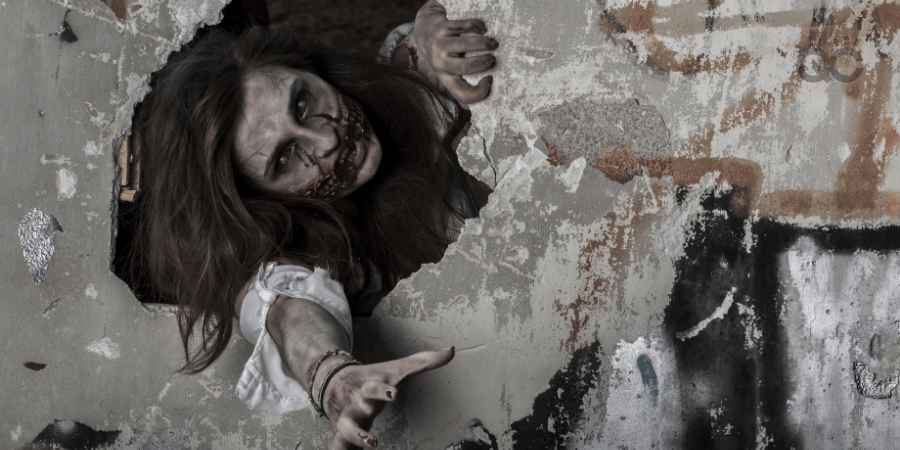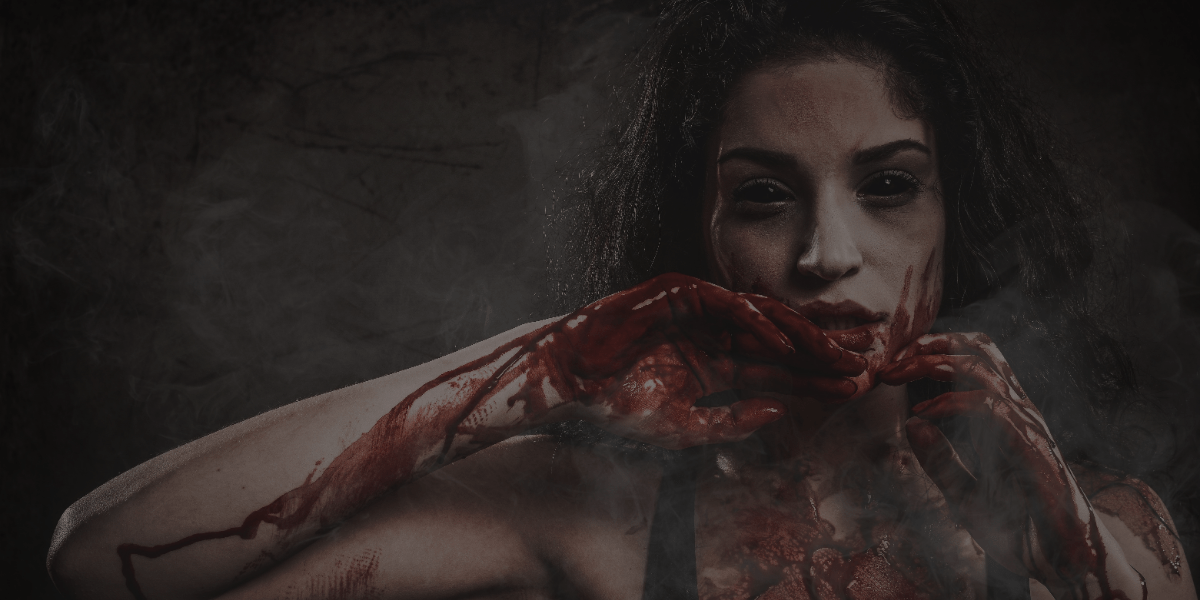Gabrielle Rivera is a QC Makeup Academy graduate and professional makeup artist. To see more of her work, visit her Instagram here. Today, Gabrielle gives us a behind-the-scenes look at one of her most recent makeup jobs!
The most important advice I can give to both novice and experienced makeup artists alike is to be open to new opportunities throughout their career. Sometimes, stepping outside of your comfort zone is the best way to find makeup jobs and book new clients.
If you’re like me – an MUA whose clientele mostly consists of bridal, special occasion, and/or photography makeup – and you’re looking to gain some experience, then this article is for you!
This Halloween season, I was hired as a makeup artist for a haunted house in my hometown. If you’re interested in delving into the world of special effects makeup, or simply wish to branch out and challenge yourself, then I strongly recommend this kind of opportunity.
If you’re now playing with the idea of providing makeup services for haunted houses in your own area, you’re in luck! I’ve got 4 tips to help you get started, so let’s dive right in!
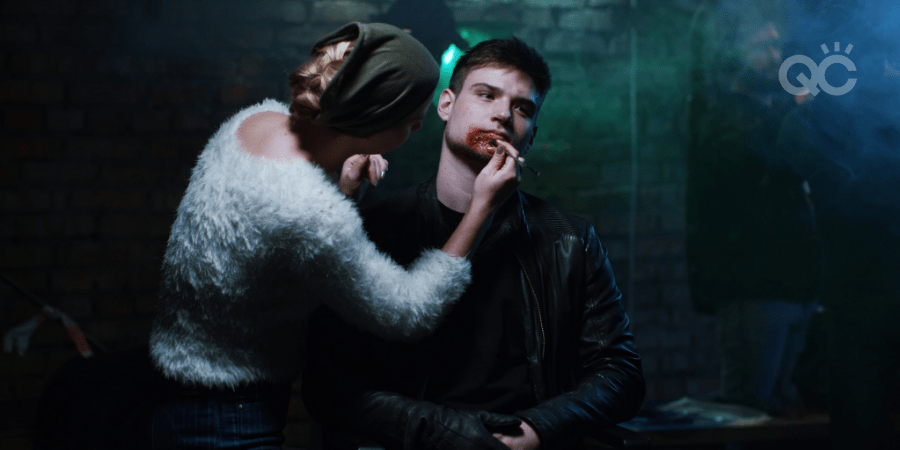
1 – Research Haunted Houses Close to You
Firstly, you’ll want to research into the haunted houses in your hometown and surrounding areas. This is a crucial step, especially for new makeup artists coming into the field of special effects makeup for the first time!
Sometimes, artists can feel intimidated by the idea of applying for makeup jobs that are different from what they’re used to. However, you might just be exactly what your local haunted houses are looking for! Many places like these are on the hunt for fresh eyes and new talent. If you’re someone who’s willing to learn and likes to collaborate with others, you’ve already got one foot in the door.
Applying to a haunted house that is close to you can be a great learning opportunity. It’ll give you a chance to network with other professionals in this field and gain hands-on experience. Also, remember that even as a newcomer in special effects makeup, you can still very easily apply the foundational knowledge you’ve learned from your professional training!
2 – Practice the Basics
When you’re first hired as a makeup artist for a haunted house, you may do what I did and run to Instagram or YouTube for inspiration and preparation. However, what you’ll quickly learn from working at a haunted house is that the looks you create need to be speedy, yet detailed.
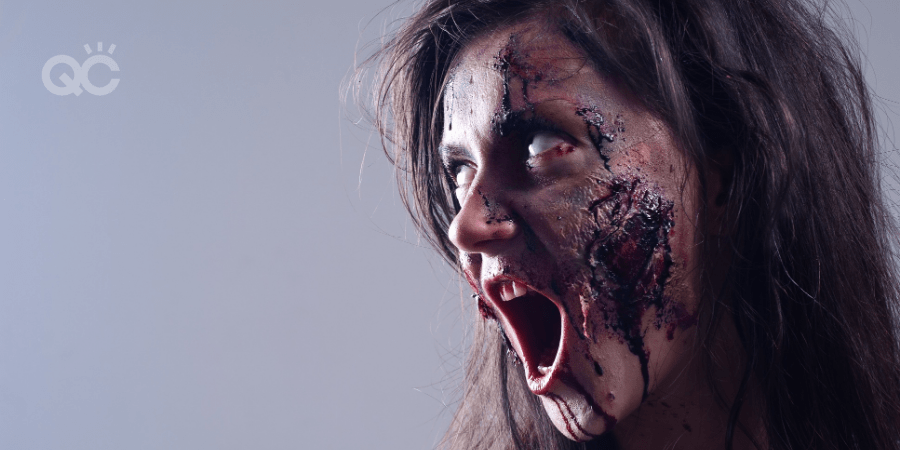
As such, your best friend is going to be proper training from an industry expert. This is the single greatest way to master the basics, such as…
Good Old Cotton and Latex
You might already have experience using scar wax, third degree, or other compounds to create special effects makeup looks. However, most haunted houses actually use cotton and latex to create their effects. This is because this particular combination can be the most long-wearing. One of the best things you can do is practice creating different wounds, slashes, and zombie-like effects using these 2 simple items.
Basic Effects
Alongside cotton and latex, practice creating 3-D cuts, scrapes, veins, and bruises with regular cream and grease paints. As much as larger wounds and prosthetics can create a look, it’s the small details that make a look complete.
The basics are what will make your work stand out amongst the others. Use the actor’s natural creases, wrinkles, scars, and physical features (such as their bone structure) to accentuate the look you are creating!
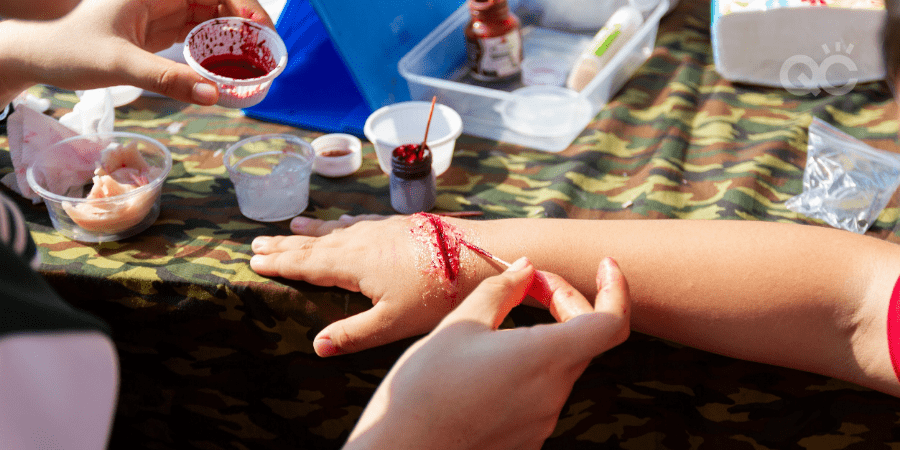
3 – Creating Your Looks
Likewise, most haunted houses use airbrushing, as well as cream or grease paints. These will hold up the longest under all of the environmental conditions. For example, you need the actor’s makeup to last throughout the night and not smudge or run due to heat, sweat, and possible rain.
As a makeup artist, you also now need to practice creating looks on top of a mask. After all, you and your clients will be expected to follow health protocols for COVID-19 safety. (This is the case for all makeup jobs you take on for the time being.) So, think about how you can incorporate a mask into your haunted house looks.
When creating looks for your haunt, one of the most important things to keep in mind is that the looks should have high contrast. This way, they can be seen clearly in the dark and against the fog. Instead of worrying about each detail being perfectly blended like you would in beauty makeup, some of your looks should have harsh lines. That way, they’ll be most prominent in the dark.
Your base colors are generally going to be white, yellow, red, and black. You can use these colors to build depth on the skin. If your character is to appear frozen, for example, your base colors would be white, purple, and blue, with hints of red. Practicing how to apply these base colors will be key in creating quick yet realistic looks.
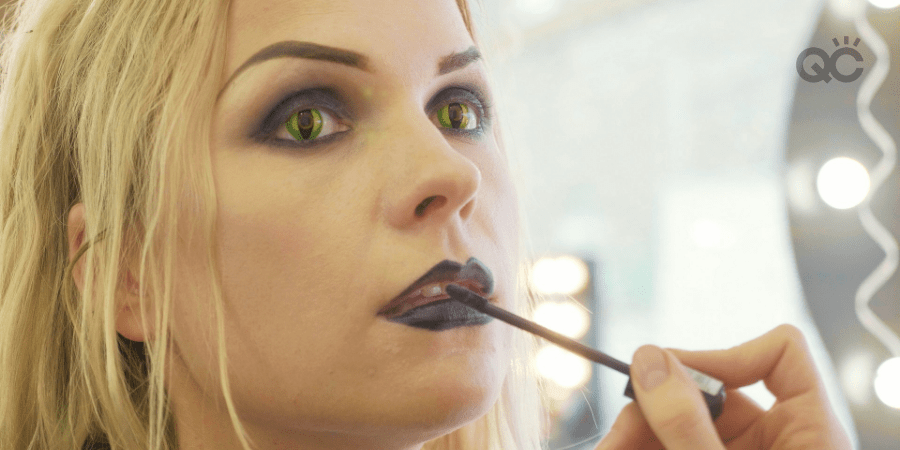
4 – Time Yourself
Lastly, keep in mind is that when working for a haunted house, you’ll be working alongside other makeup artists, too. A big team is required in order to transform over 30 actors in just a few hours. With that being said, you’ll have to create a completed look in 20 minutes – max!
Something that I found helpful was to use friends and family to practice this on. I’d give myself 20 minutes to see what I was able to create in that timeframe. This also gave me the opportunity to ask myself, “How can I create this same effect – but faster?”
These kinds of makeup jobs also teach you how to prioritize and better plan out your steps when applying makeup. For example, I’d first begin by using latex and cotton on my actor, so I could create a slash or open wound. While the actor is using a blow dryer (always on the cool setting to protect their skin) to dry the latex and cotton mixture, I would then begin applying makeup to their arms, neck, or other exposed areas. Thus, allowing me to create one uniform look without wasting any time!
Practice creating simple cuts, bruises, and small latex and cotton mixtures on your own time. This prep work will help make your looks more realistic! The end result will be that even the tiniest details stand out just as much as the bigger wounds or prosthetics you apply.
